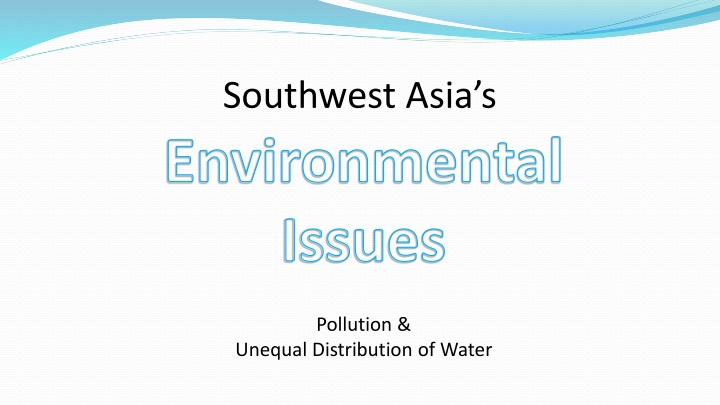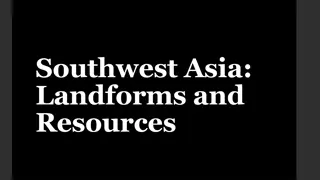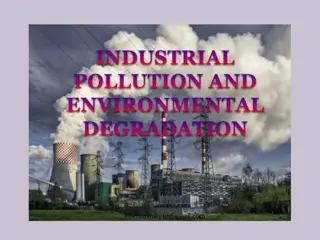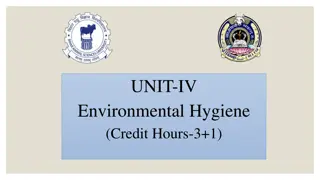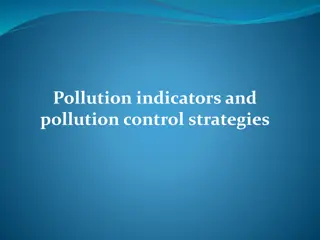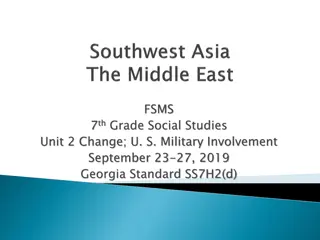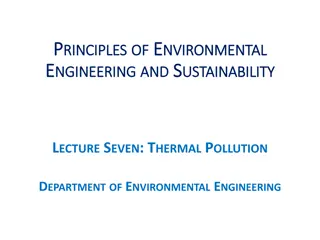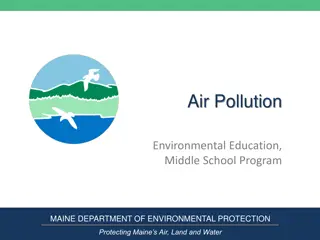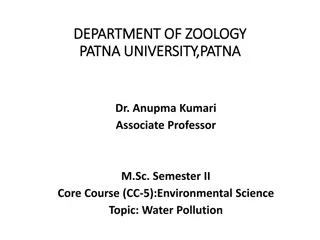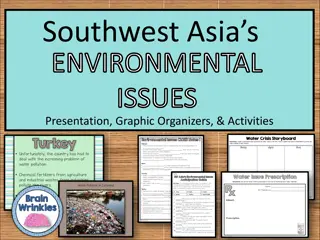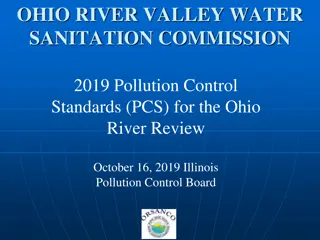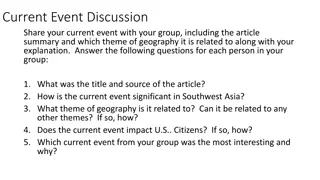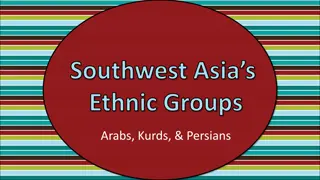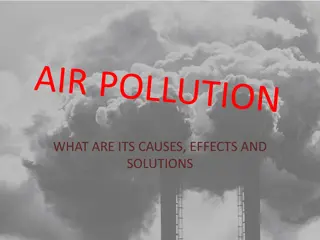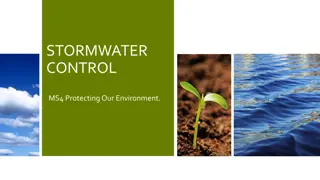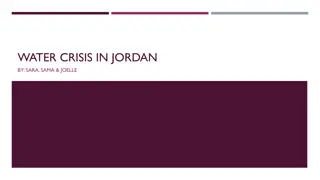Environmental Issues in Southwest Asia: Pollution and Water Distribution
Pollution and unequal distribution of water in Southwest Asia, particularly affecting irrigation and drinking water. Countries like Turkey, Syria, Iraq, Israel, and Jordan face various challenges such as water pollution, reduced water flow due to dams, conflicts over water rights, and scarcity issues impacting agriculture and daily life.
Download Presentation

Please find below an Image/Link to download the presentation.
The content on the website is provided AS IS for your information and personal use only. It may not be sold, licensed, or shared on other websites without obtaining consent from the author.If you encounter any issues during the download, it is possible that the publisher has removed the file from their server.
You are allowed to download the files provided on this website for personal or commercial use, subject to the condition that they are used lawfully. All files are the property of their respective owners.
The content on the website is provided AS IS for your information and personal use only. It may not be sold, licensed, or shared on other websites without obtaining consent from the author.
E N D
Presentation Transcript
Southwest Asias Environmental Issues Pollution & Unequal Distribution of Water
Standards SS7G6 The student will discuss environmental issues across Southwest Asia (Middle East). a. Explain how water pollution and the unequal distribution of water impacts irrigation and drinking water.
Pollution Many countries in Southwest Asia have increasing problems of water pollution. Farmers use chemical fertilizers that run off from the fields and contaminate water. Chemicals also lead to salt build-up in the soil, which eventually makes farming in those areas impossible.
Turkey Turkey has a water advantage over other Middle Eastern countries because the Tigris and Euphrates rivers form in the country s highlands. This country has had to deal with the increasing problem of water pollution. In addition to chemical fertilizers and industrial wastes, the rivers have also been affected by oil spills in the Black Sea.
Syria The dams that Turkey built along the Euphrates have greatly reduced the amount of water to Syria (40% less). In order to keep some water in the country, Syria has also built dams along the river. This has reduced the river s flow into Iraq, causing more conflict
Iraq The dams that Turkey & Syria built along the Euphrates have also greatly reduced the amount of water reaching Iraq (80% less). This has impacted the country s food supply. Iraq also faces water pollution problems as a result of industry and drilling equipment. Also, 3 decades of warf have caused damage to Iraq s water treatment facilities
Israel Since its creation in 1948, Israel has developed new technology and advanced farming techniques that have turned the desert land into farmland. Because rainfall is down, Israel has to rely on drawing water from its aquifers (underground layer of rock and sand that contains water). Unfortunately, the aquifers are in jeopardy because more water is taken out than is replenished by rain. Israel has been involved in many conflicts over water rights to the Jordan River with Syria, Jordan, and
Jordan Jordan is one of the ten most water scarce countries in the world. The country s major surface water sources are shared with Israel and Syria, who leave only a small amount for Jordan. Israel has built pipelines that redirect the river s water away from Jordan and into its own lands. Jordan & Israel have been involved in military battles over water rights. Jordan cannot meet the basic needs of its people and
Saudi Arabia Saudi Arabia has a desert climate and has struggled to meet the water needs of its growing population. Water is scarce in the country, and what little water that is available is of poor quality because of salt water intrusion. The country has built a number of desalination plants that provide most of the country s drinking water. Desalination is the process of taking salt out of seawater and using it for drinking water.
